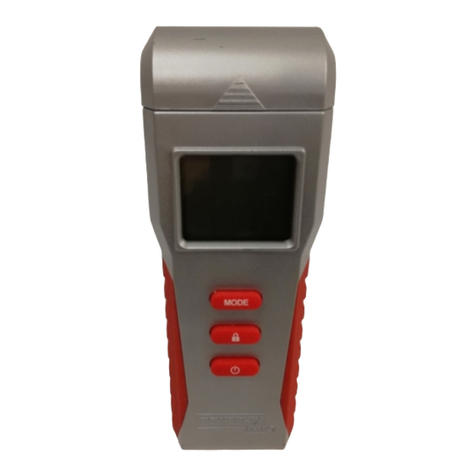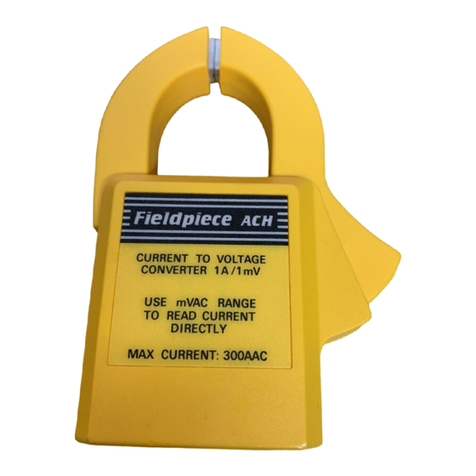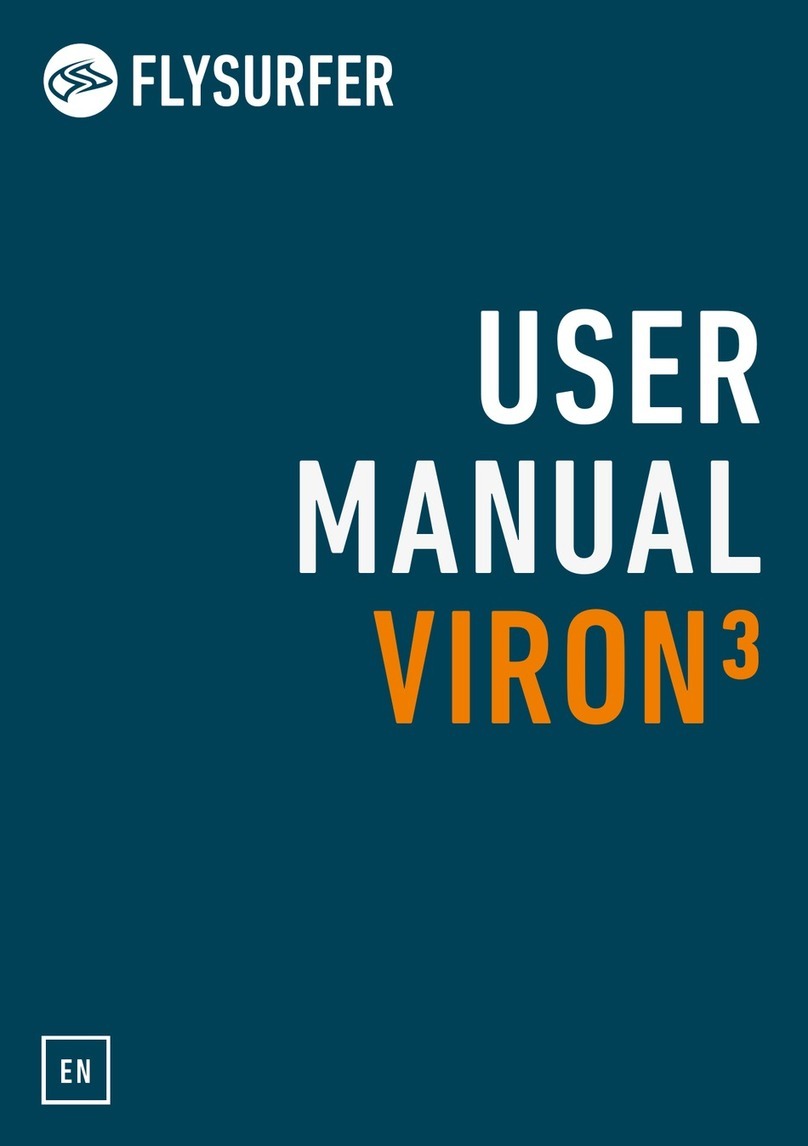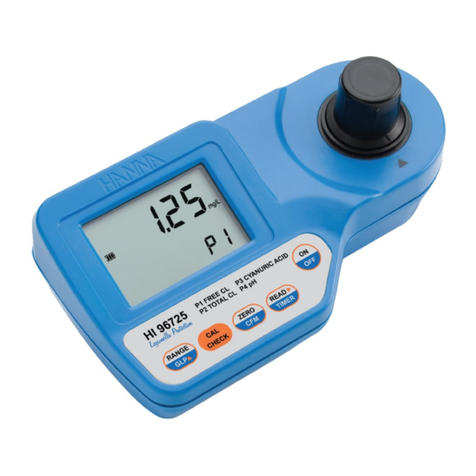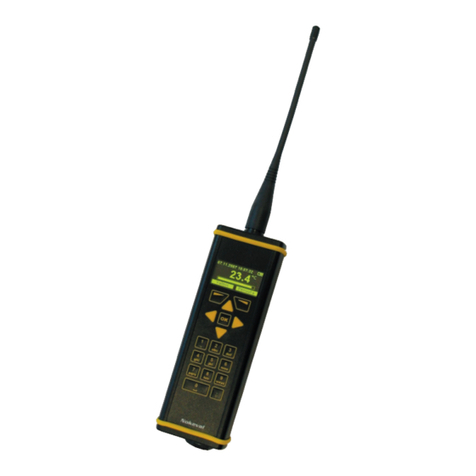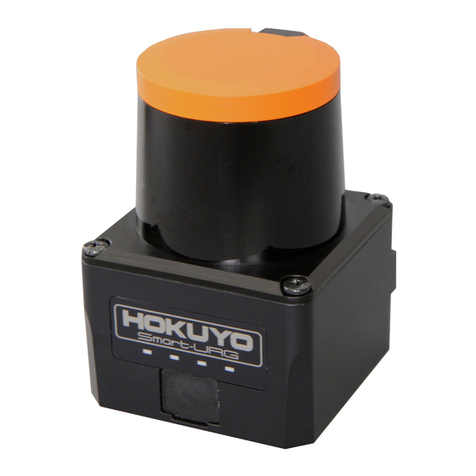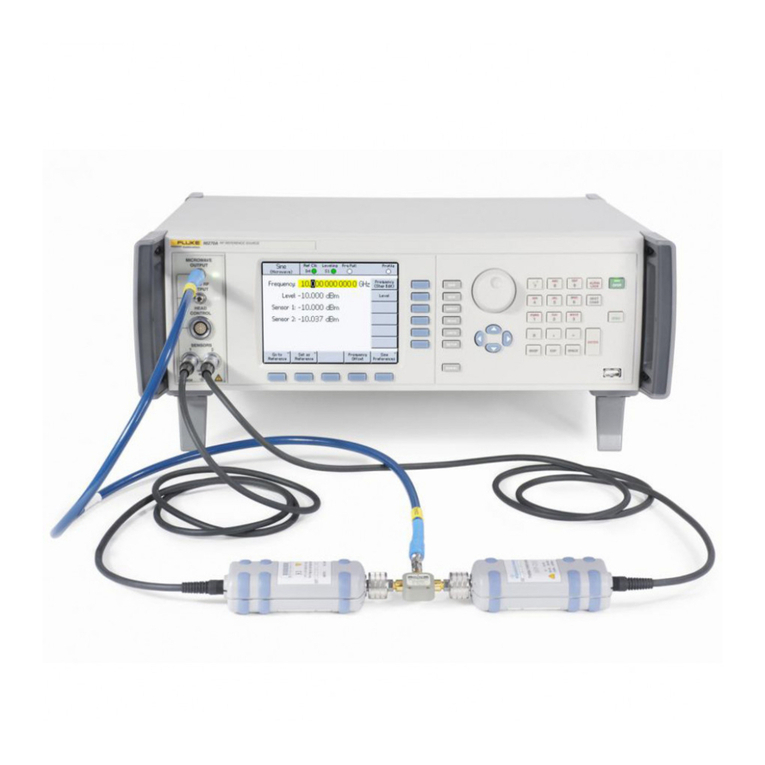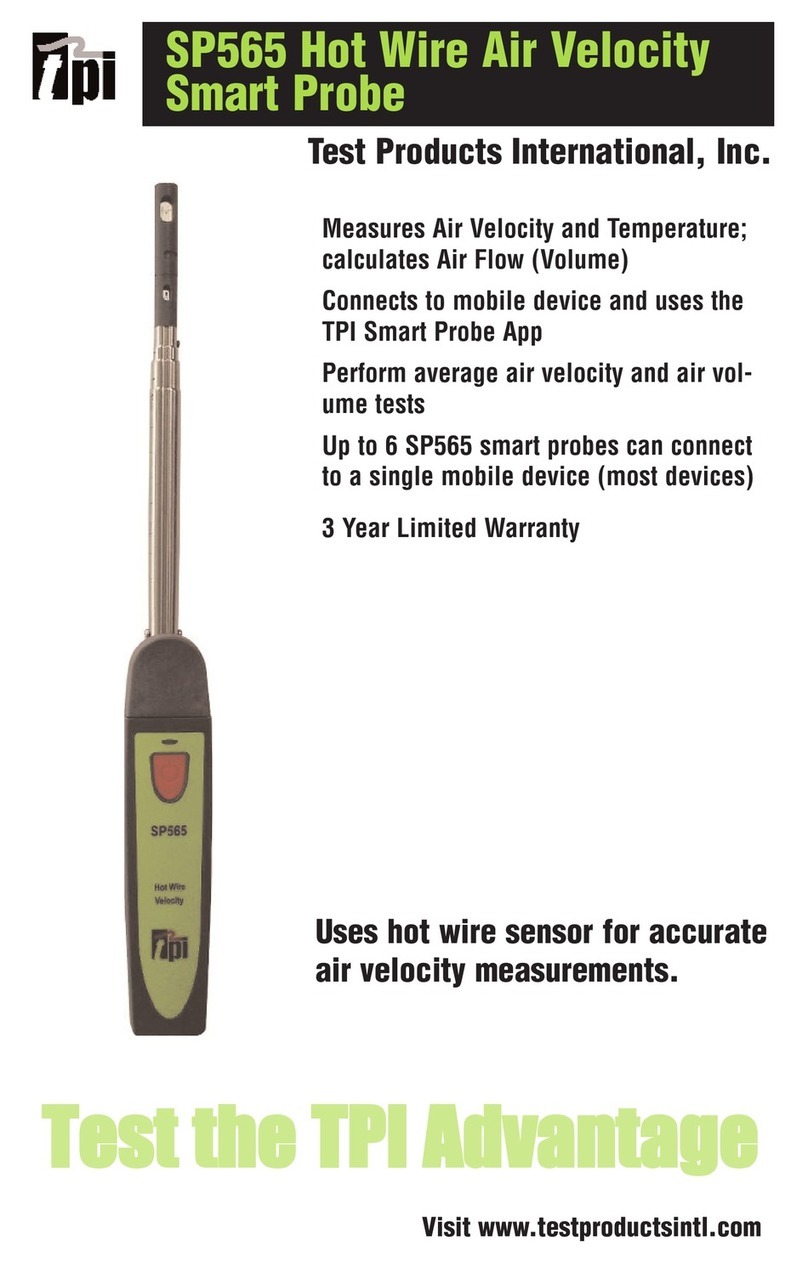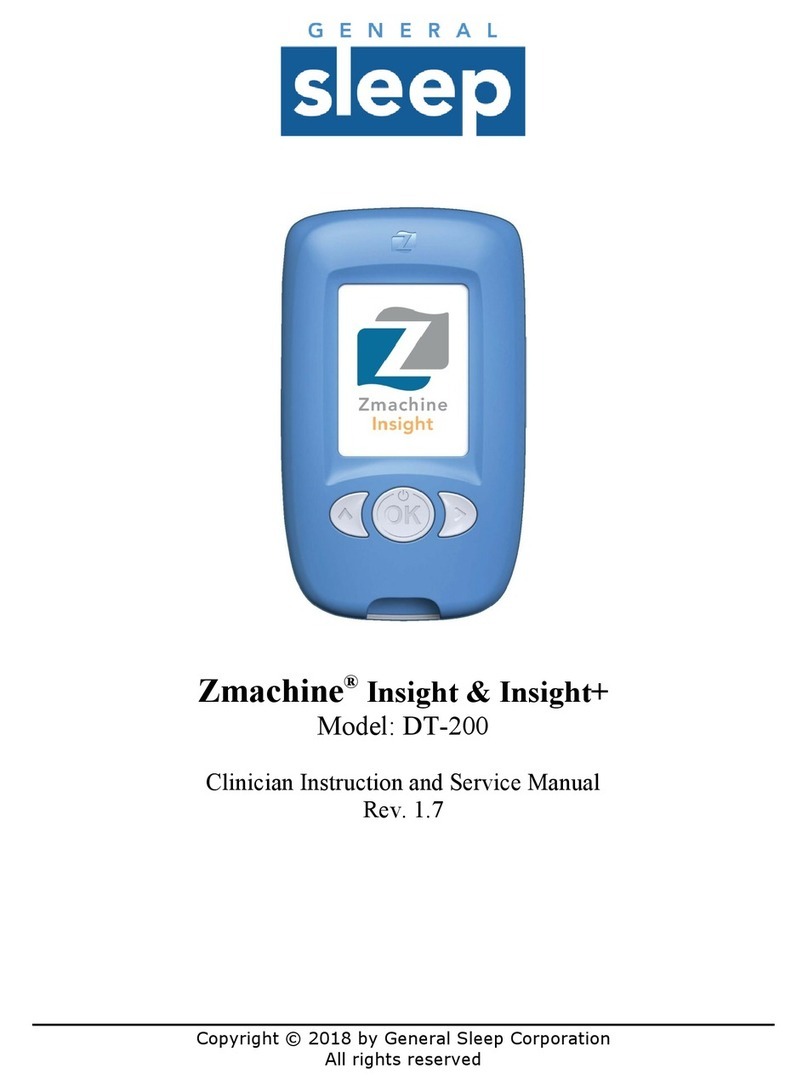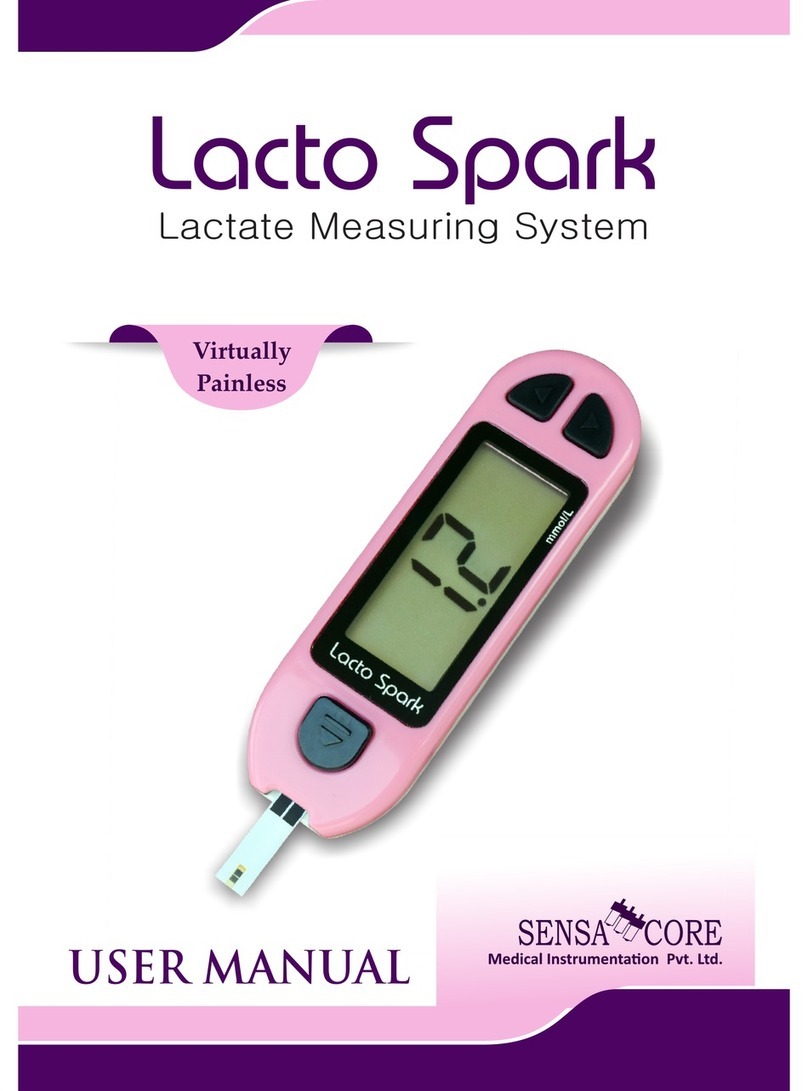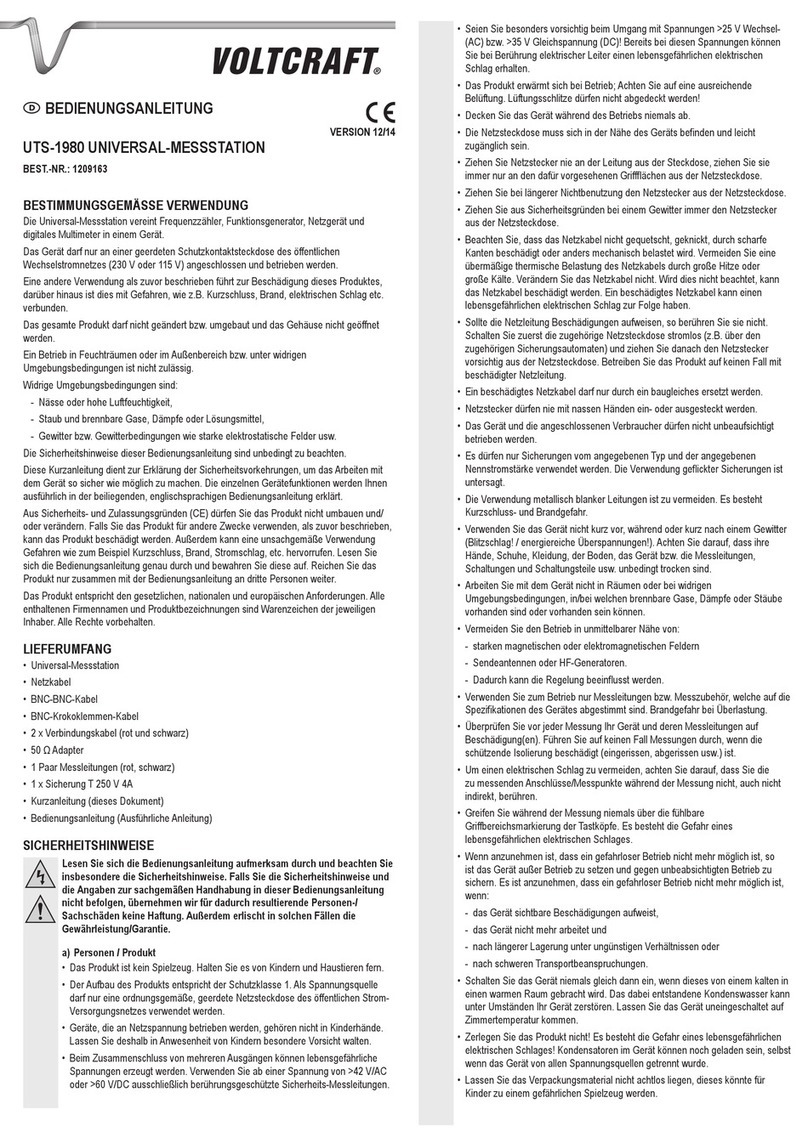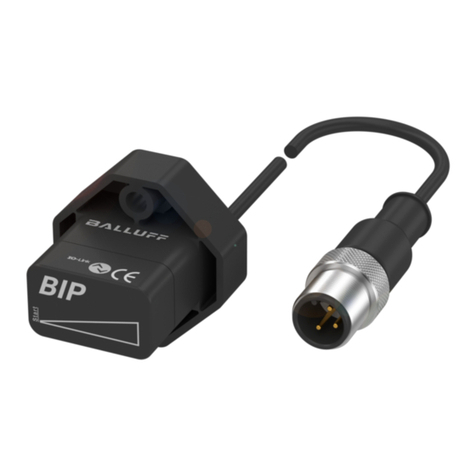
2©Firey AB (August 2013)
Description
The Omniguard model 540 UV/IR test source is a self-contained,
portable, hand-held, explosion-proof device designed to stimulate
Omniguard UV/IR ame detectors. The model 540 contains a
rechargeable battery and circuitry to power two light sources which
emit a calibrated ratio of ultraviolet (UV) and infrared (IR) energy
simulating the spectral radiant characteristics of a ame source.
The model 540 is not an absolute calibration source, however, and
is only intended to generate sucient UV and IR radiation in a ratio
recognized by the ame detectors as being representative of a ame
source, thereby initiating a re relay closure and subsequent alarm.
Proper calibration of Omniguard ame detectors can only be achieved
by the manufacturer using open ames and sophisticated test
equipment.
Application
The model 540 UV/IR test source is designed to test Omniguard model
730, 750, 850, and 860 UV/IR ame detectors.
Specications
The model 540 UV/IR test source is approved for use in Class I,
Division 1, Groups C and D areas. Third party testing has been
performed by Canadian Standards Association (CSA).
Performance
Typically, a fully charged model 540 UV/IR test source will work
eectively at a range not to exceed 15 feet (4,6 meters) when aimed
directly at the face of the detector. The eective test distance to the
ame detector and number of tests achievable on a fully charged
battery will vary depending on the Omniguard ame detector model
and the user selectable settings.
Operating instructions
Cautions: For safety reasons, the following operational cautions must
be understood and strictly adhered to while using the model 540 UV/
IR test source.
•Donotlookatoraimthetestsourceinthedirectionofanother
person. When powered, the ultraviolet radiation generated by the
model 540 can permanently damage eyesight.
•Duetoitssizeandweight(13pounds(5.9kilograms)),careshould
be taken when climbing ladders, etc.
•Chargingthemodel540shouldonlybeperformedinnon-
hazardous environments. After charging has been completed,
replace and securely tighten the charging plug access cap prior to
entering a hazardous area.
•Neverenergizethemodel540whileitisbeingcharged.
•Deactivateallautomaticresuppressionsystemspriortotesting
the ame detectors to avoid unwanted discharging of the
suppressant.
Operation
The model 540 test source is shipped with an uncharged battery and
will require full charging prior to use.
Remove the charging plug access cap located in front of the handle on
the top side of the test source. Do not remove the rear cover. First plug
theconnectoroftheOmniguardcharger(Fireypartno70719)into
the test source socket, then plug the charger into a 120 VAC outlet.
Allow the test source to charge for a full 16 hours. Do not turn on the
test source while charging.
Remember to securely tighten the charging plug access cap after
charging is complete to maintain the explosion-proof integrity of
the test source. In a fully charged state, the test source will typically
provide 30 to 45-second tests.
To perform a simulated ame test, it is important to face the ame
detector as squarely as possible at a maximum distance of 15 feet (4.6
meters)orinthecaseoftheOmniguard753,9feet(2.74meters).The
extremely narrow beam width of the IR light source requires use of the
sighting tube for reliable operation. When properly aimed, the smaller
of the two windows on the ame detector (IR channel) should be
centered within the viewing angle provided by the sighting tube.
Note:O-axisaimingofthemodel540testsourcewillresultina
reduction of sensitivity (test distance) and is not recommended.
To initiate a test, pull back on the slide trigger. Release the trigger only
after the ame detector has alarmed or sucient time has elapsed
in which the detector should have gone into an alarm state. Do not
maintain trigger engagement for periods longer than 10 seconds.
Standard model 860, 850, 750, and 730 ame detectors have a factory
set, re relay actuation time delay of three seconds. In order to
perform a simulated re test and activate the re relay it is necessary
to maintain aiming of the test source on the ame detector for the
duration of the time delay setting. It is not recommended that the
model 540 UV/IR test source be used for testing ame detectors with
delays exceeding three seconds.
Following each test, a period of approximately 60 seconds is required
for the battery pack to regain its full capacity. Attempts to retest prior
to battery recovery will result in a weak output signal from the test
source.
The quartz halogen lamps used in the model 540 generate signicant
amounts of heat during use. Therefore, when using the test source, it
is recommended that in cases where several tests of up to ten seconds
duration are to be made, cool-down periods are allowed between
successive tests. It is important to note the case temperature during
use and allow the model 540 to cool if it becomes noticeably warm to
the touch.
Failureoftheamedetectortorespondindicatesoneofthefollowing:
•Thedistancebetweenthetestsourceandtheamedetectoristoo
great.
•Aimingofthetestsourcewasnotaccurateenoughtoexciteboth
channels of the ame detector.
•Theamedetectorundertestisinoperable.
•Theamedetectoroptics(windows)requirecleaning.Cleanthe
optics and repeat the test.
•Obstructionsbetweentheamedetectorandtestsourcemaybe
preventing sucient ”light” from reaching the ame detector face.
•Thetestsourcebatterymayhaveinsucientchargeoris
malfunctioning.
